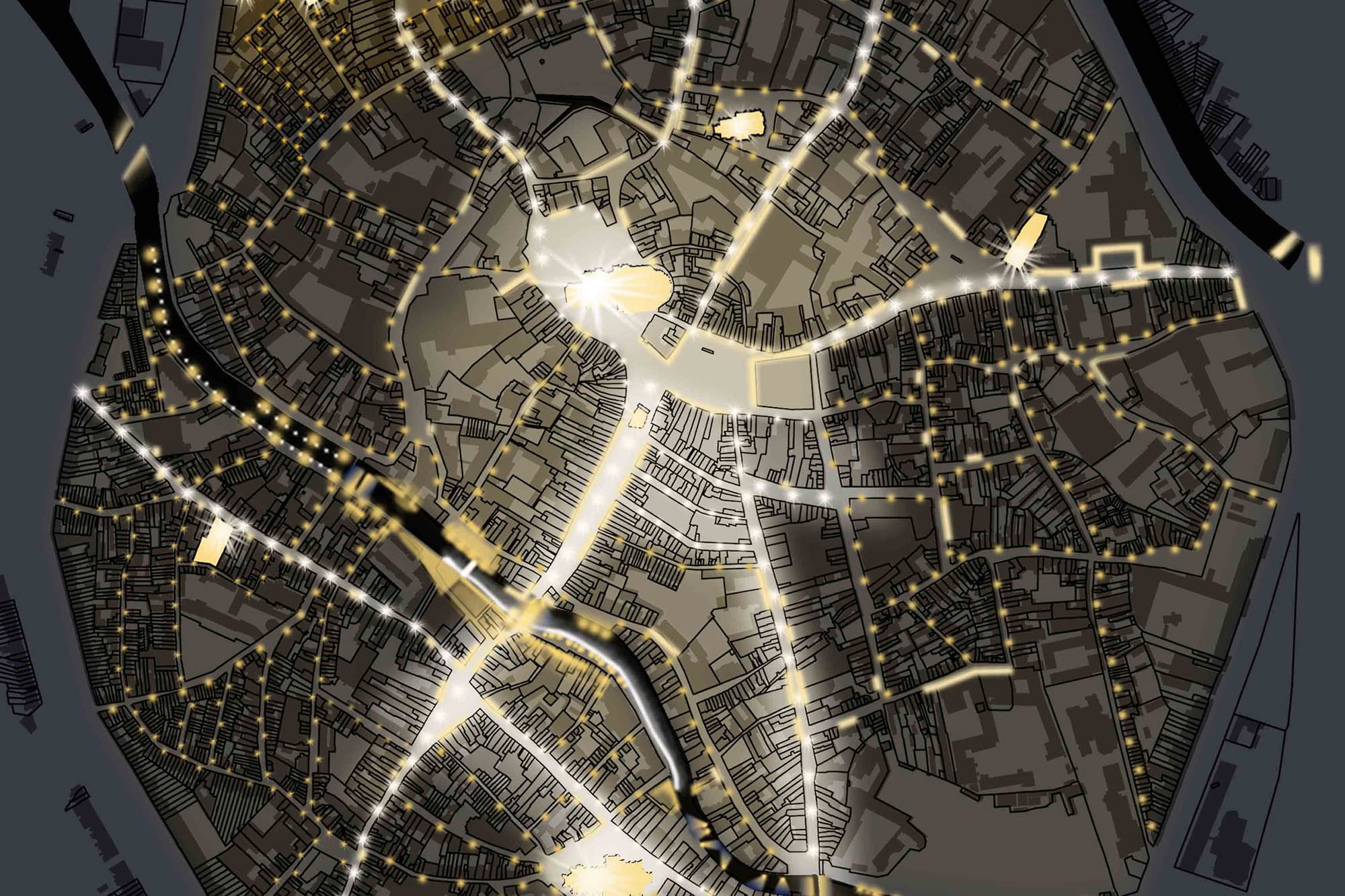
Mechelen
Mechelen’s 2008 Lighting Masterplan enhances safety, identity, and heritage by using adaptable white lighting across key urban features, respecting the city's structure while creating a layered, energy-conscious system tailored to function and aesthetics.
A Lighting Masterplan is a thoroughly studied strategy aimed at enhancing the city's identity & safety while respecting its structure & character within normative requirements.
In 2008, the city issued a public competition that we won for elaborating a Lighting Masterplan for the downtown area.
The plan addresses key features of the city: The ring road surrounding the city is emphasized, as well as the historical walls, partially demolished to allow for easier circulation; Important landmarks, major attractions for residents & visitors; The important urban axes, used for pedestrian and vehicular circulation; The Dijle river, which cuts through the city diagonally, with its natural features.
The Lighting Plan was conceived as a set of superimposed layers, each tailored to specific characteristics & challenges: It respects the city’s urban layout & highlights important areas; it meets functional needs of different spaces, ensuring lighting is adapted to seasonal requirements & specific activities; defined areas are treated in their own lighting vocabulary, creating internal nighttime identity based on aesthetic and functional considerations. White light was adopted citywide, enhancing colour perception, visibility of faces & general safety. Despite slightly higher consumption than yellow sodium, it outweighs drawbacks in urban settings.
The system is designed to adjust to seasonal changes & specific events. Architectural and landscape elements can be turned off or dimmed for eco-considerations, energy conservation & adaptability to future needs.